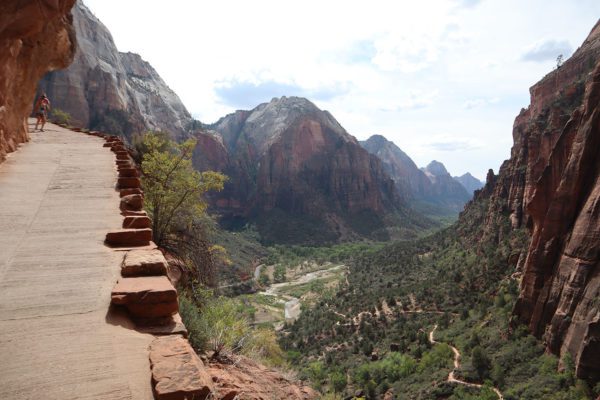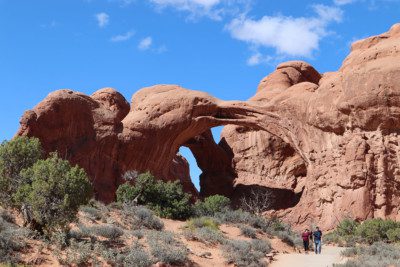10 Days In Utah Road Trip Itinerary
Until commercial flights to Mars begin, a road trip in Southern Utah is the best option if stunning desert scenery and the sense of remoteness whet your appetite. Covering over 400 miles and five national parks, taste freedom in its purest form on this 10 days in Utah itinerary.
This Utah road trip itinerary covers all five members of Utah’s “Mighty Five” national park. It’s primarily based on my experience during a five-week road trip in the Southwest, where I spent nearly two weeks in Southern Utah.
Several sections comprise this 10 days in Utah road trip itinerary:
- Zion National Park (2 days)
- Bryce Canyon National Park (1 day)
- Capitol Reef National Park (2 days)
- Arches National Park (2 days)
- Canyonlands National Park (3 days)
10 Days in Utah Itinerary Map
Here’s the driving route we’ll follow on this itinerary. Simply click on the image to open it in Google Maps.
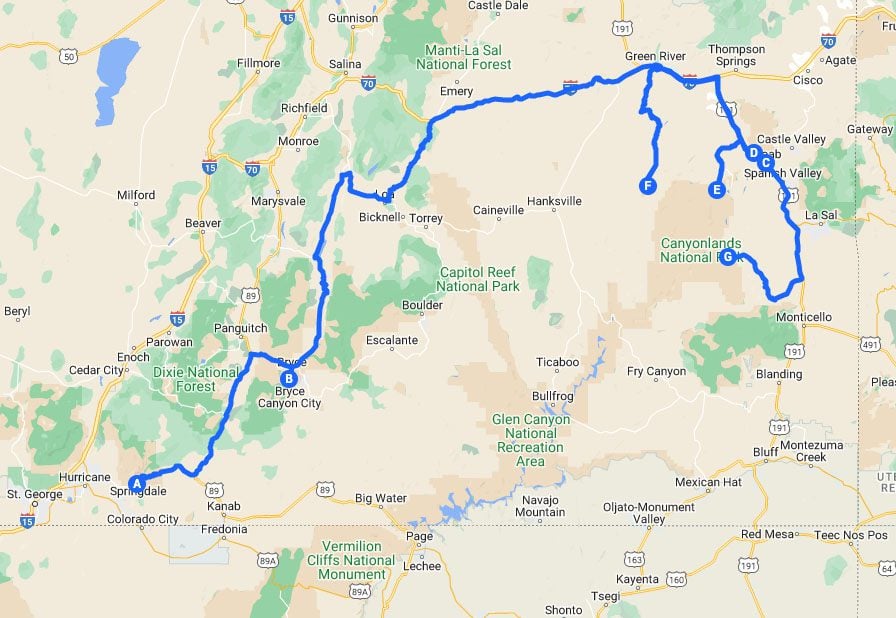
Additional Resources
Check out in-depth national park guides, sample itineraries, essential planning tips, and more on the Southern Utah travel guides collection, as well as additional travel guides to America’s Southwest.
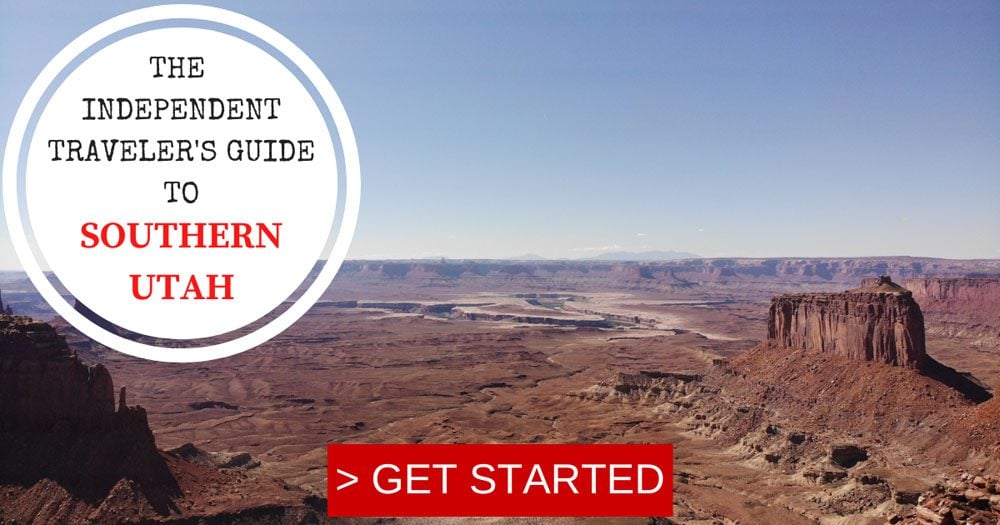
Before hitting the road, here are a few tips to keep in mind:
- Inspect your spare tire and parts (even on a rental car), and check your oil and other essential fluids.
- Fill your gas tank before it dips below 50%.
- Carry more water and food than you think you’ll need.
- Download offline navigation maps but also carry a physical map of the area.
- Purchase a copy of the Moon Utah travel guide to prepare for the trip and learn about the region.
- Carry a USB car charger.
- Chat with park rangers to “sanity check” your driving and travel plans.
- Stay on paved roads and only drive on dirt roads that suit your vehicle.
- Familiarize yourself with what to do when your car overheats.
- Carry a first aid kit and a flashlight.
- Do your best to avoid driving at night.
- Upgrade to All Trails Pro and download trail maps to your smartphone for offline use.
- Think carefully about the travel gear you’ll need: clothing, sun protection, hiking gear, etc.
- Prepare for the elements: hot, cold, dry, and wet conditions.
- Purchase the America the Beautiful Pass to substantially save on paying park fees.
Zion National Park (2 Days)
Start your 10 days in Utah road trip at Zion National Park. With over 4.5 million annual visitors, Zion is the most popular national park in Utah. Most visitors focus their time on Zion Canyon, a small yet awe-inspiring section of the national park. If you’re starting your road trip from Las Vegas or the Grand Canyon, Zion is an optimal first stop.
If driving from the Grand Canyon to Zion National Park, consider spending a night in Page, Arizona, to explore Antelope Canyon and Horseshoe Bend.
Where to Stay?
The Zion Lodge or the Watchman and South Campgrounds are the only options if you want to stay inside the national park. The town of Springdale is the next closest option to Zion Canyon, also benefiting from a free shuttle that connects the town with the park’s visitor center. About 30 minutes by car, the towns of La Verkin and Hurricane offer many accommodation options at reasonable prices.
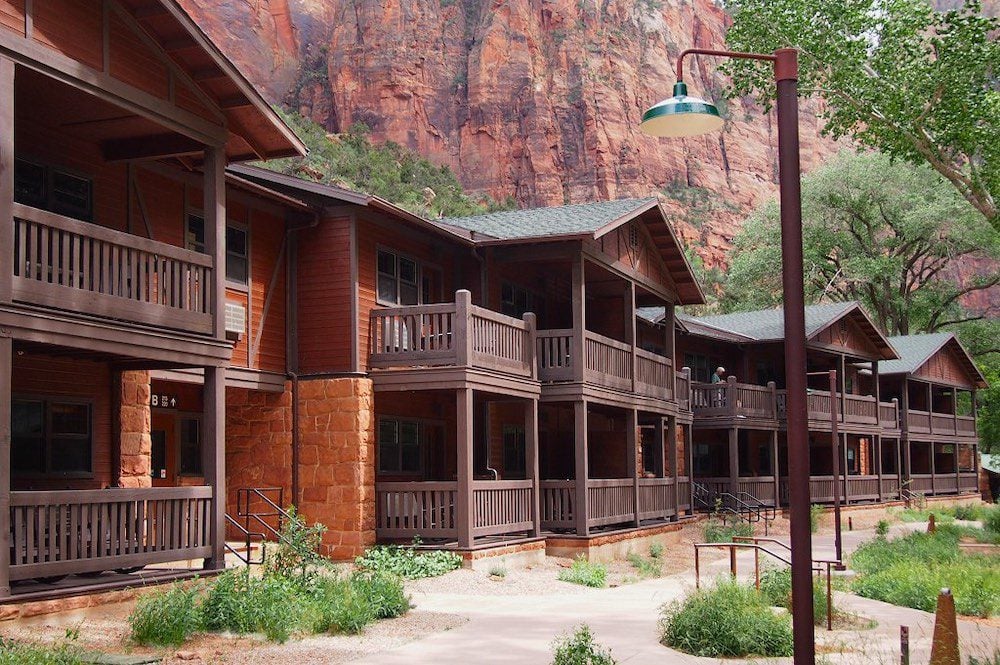
Here are all the Zion National Park region accommodation options that can be booked online via Booking.com.
What to Do?
Spend the first day in the national park exploring the length of Zion Canyon using the free shuttle buses. Start the day at the tip of the canyon with the Riverside Walk and if you’re well prepared, continue by hiking part of the Narrows Trail. In the afternoon, complete the Emerald Pools trail and, if there’s enough “gas in the tank”, wrap up the day with the challenging yet short Watchman Trail.
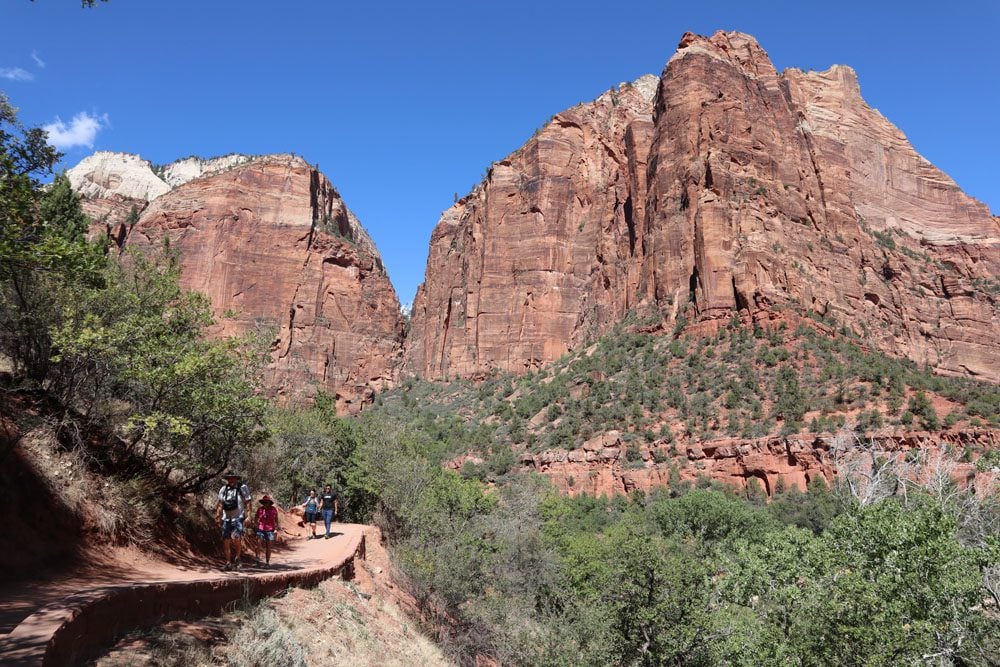
Start your second day in Zion National Park by hiking the legendary Angel’s Landing Trail. However, note that you’ll likely need to secure a hiking permit as this trail has become dangerously crowded. To wrap up your visit to Zion, head back to your car and drive on the scenic Zion-Mount Carmel Highway to pick up the short Canyon Overlook Trail. If the Angel’s Landing hike does not suit your taste, you can alternatively drive all or part of the scenic Kolob Terrace Road and escape the Zion Canyon crowds.
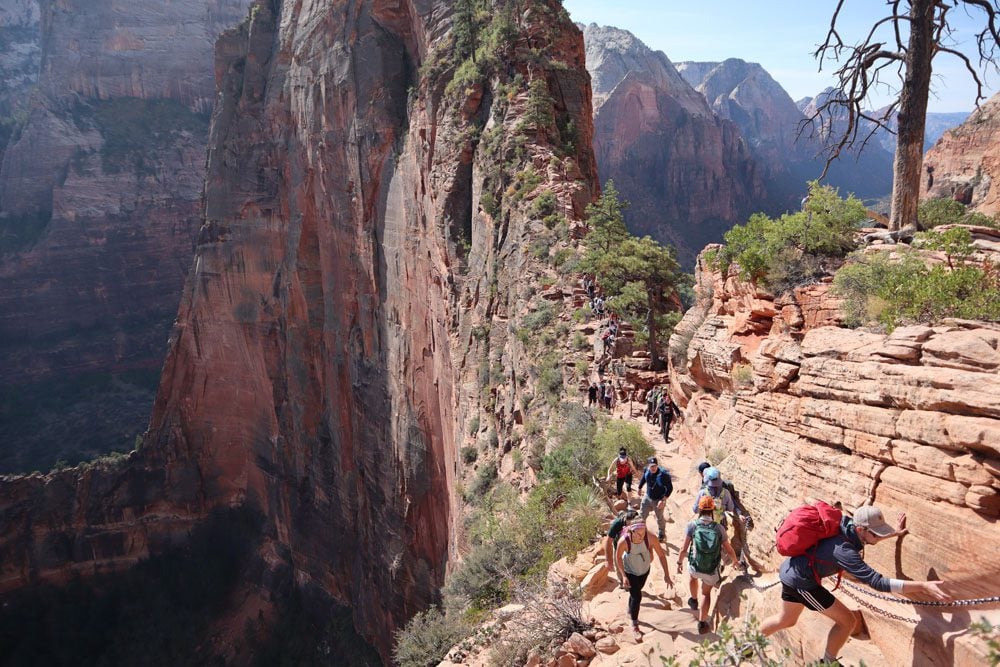
Here’s a two-day Zion itinerary that takes a deeper look at how to spend two days in the national park. For a quick read, here’s a list of the top 10 things to do in Zion.
Bryce Canyon (1 Day)
Bryce Canyon, our next stop on this 10 days in Utah itinerary, is about 85 miles from Zion. Unlike its name suggests, Bryce Canyon is not technically a canyon by geological standards but rather a series of amphitheater-like depressions in which erosion created the famous hoodoos. These pointy pinnacles are the prime reason for visiting Bryce Canyon. Though they’re also found elsewhere, their concentration and beauty are not as striking as in Bryce Canyon.
Where to Stay?
The Lodge at Bryce Canyon and the North or Sunset Campgrounds are the only options inside the national park. Most visitors stay nearby in Bryce Canyon City, where the reasonably priced Ruby’s Inn is a good option. If you can’t find anything close to the park, check what’s available nearby in Tropic.
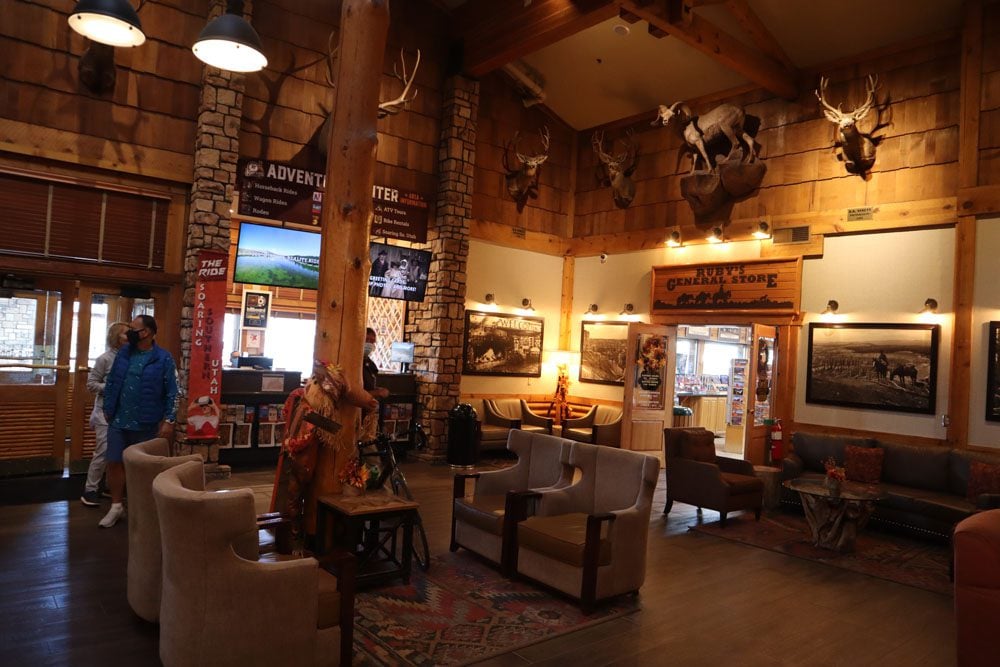
What to Do?
The drive from Zion National Park to Bryce Canyon takes about two hours. As you get close to Bryce Canyon and pick up Highway 12, the scenery, which up until now was not out of the ordinary, begins to impress. Drive through the Red Canyon Arch and head to Bryce Canyon to start the second leg of this road trip.
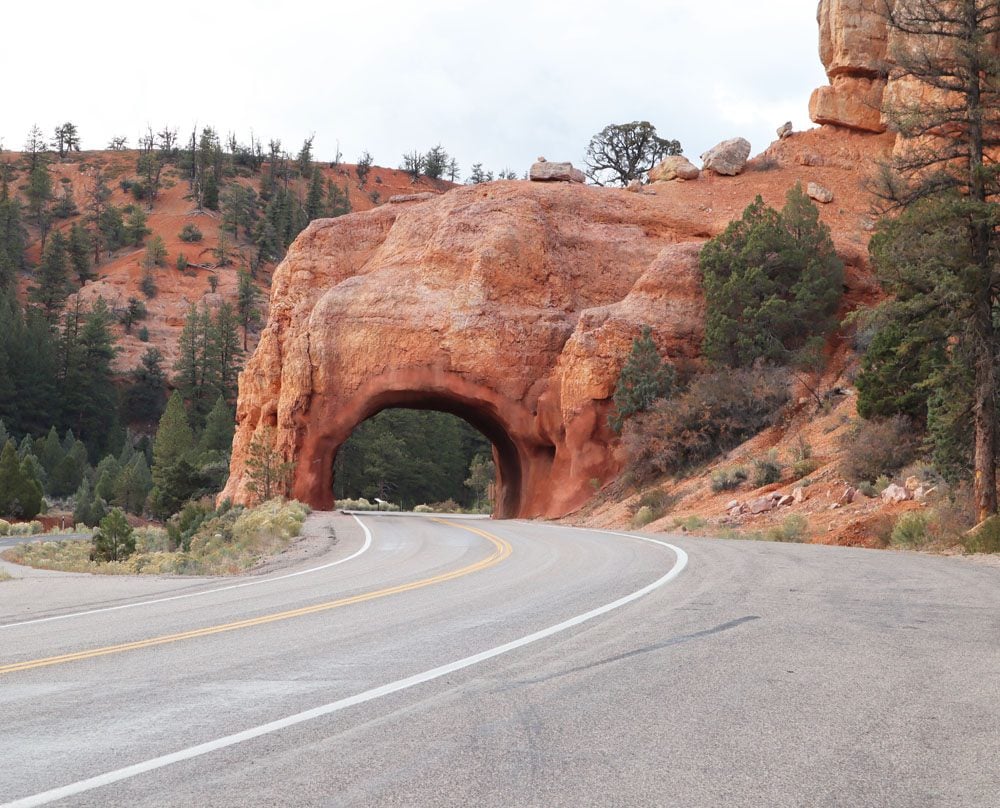
With just the afternoon at our disposal, focus your efforts on the scenic viewpoints along Bryce Canyon Road. Start at its tip in Rainbow Point, the park’s highest lookout at 9,115 feet, and work your way down to Sunset Point, the park’s main viewpoint overlooking the glorious Bryce Amphitheater.
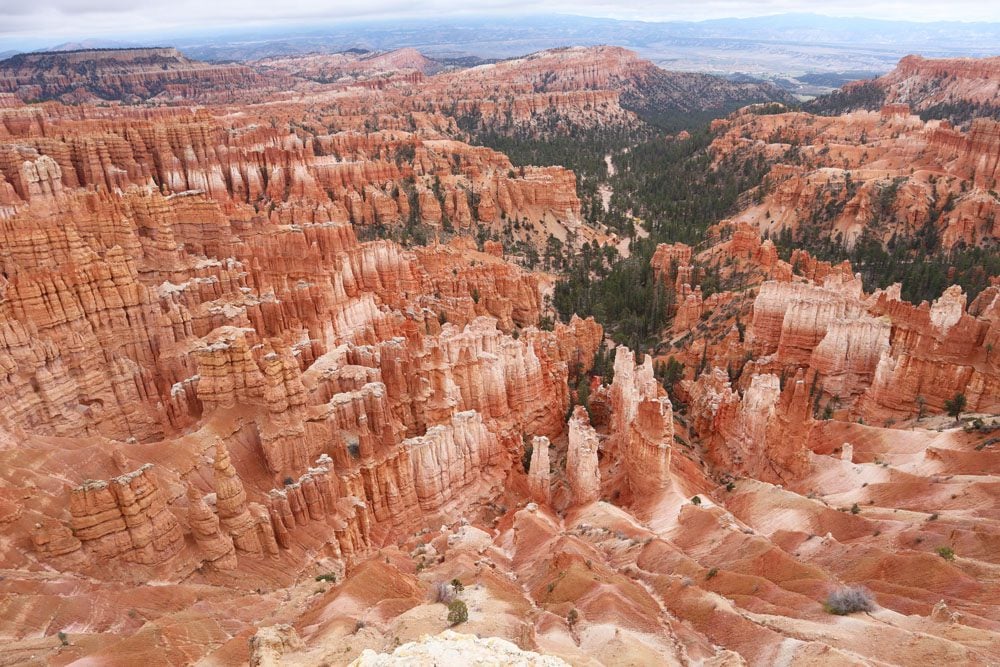
From Sunset Point, pick up the Bryce Canyon Rim Trail and walk either the short leg to Sunrise Point or the more exciting yet longer leg to Bryce Point. If the afternoon is clear, stick around for sunset.
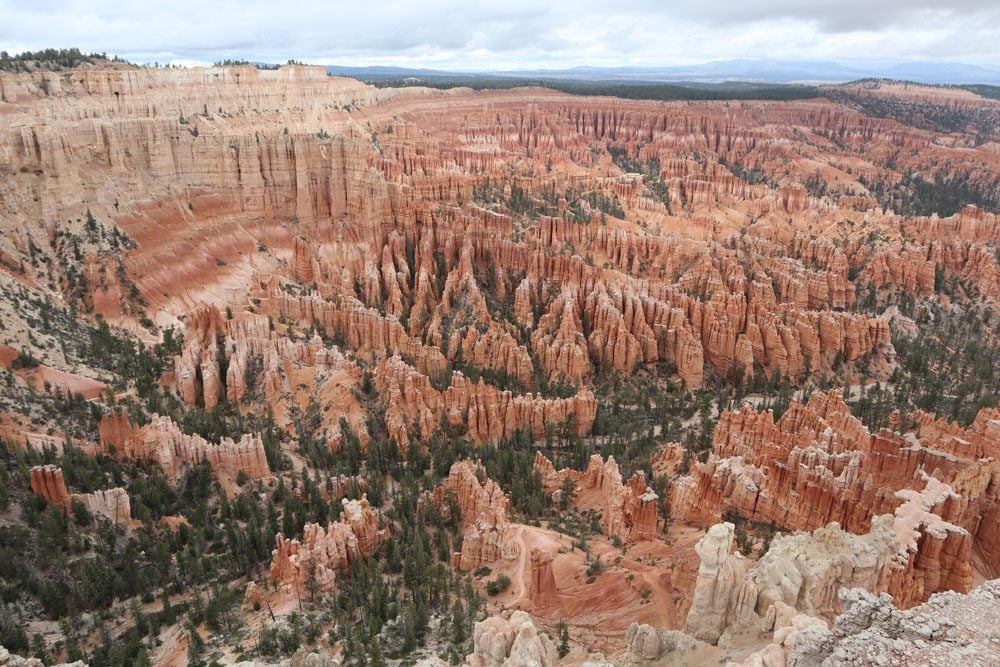
Get an early start the following morning and perhaps head back to Sunrise Point to see the sun’s first rays touching the hoodoos. Spend the morning descending from the rim and hiking on the amphitheater floor. From Sunset Point, pick up the easy Navajo Loop Trail and squeeze your way through Wall Street. On the other side, connect with the Peekaboo Loop Trail. It’s one of the best hiking trails in Bryce Canyon though some sections put your legs to work. Both trails eventually meet the easy Queen’s Garden Trail, taking you back to Sunrise Point.
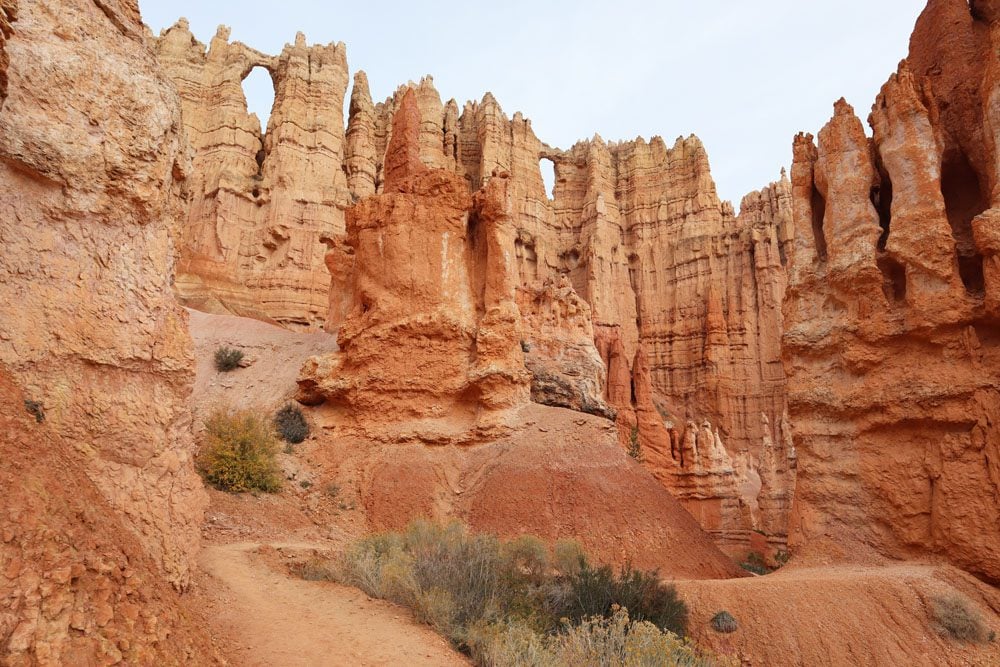
Here’s an in-depth look at how to spend one day in Bryce Canyon, along with the top things to do in and around the national park.
Capitol Reef National Park (2 Days)
The third stop on this 10-day Utah itinerary is at Capitol Reef National Park, the second-largest member of the “Mighty Five” in terms of size, after Canyonlands NP. Capitol Reef is harder to explore than other Utah national parks, but many travelers consider this lesser-known gem their favorite. Capitol Reef is located in the heart of Southern Utah, known for its slot canyons, natural bridges, and sandstone arches.
Where to Stay?
Most often, visitors to Capitol Reef “rough it out” by camping in the backcountry or at the optimally located Fruita Campground. However, if camping is not what you’re after, the towns of Caineville and Torrey are the best options.
What to Do?
Keeping our bearings in the direction of Moab, our base for the final section of this road trip, focus your efforts on the northern section of Capitol Reef. It takes about 2.5 hours to drive the scenic route from Bryce Canyon to Capitol Reef.
After completing your Bryce Canyon hike, begin the scenic drive in the afternoon to Capitol Reef. Take Scenic Byway 12, which slices through a small section of the immense Grand Staircase-Escalante National Monument. There are a few interesting roadside stops at scenic viewpoints and hiking trails, such as the hike to Lower Calf Creek Falls.
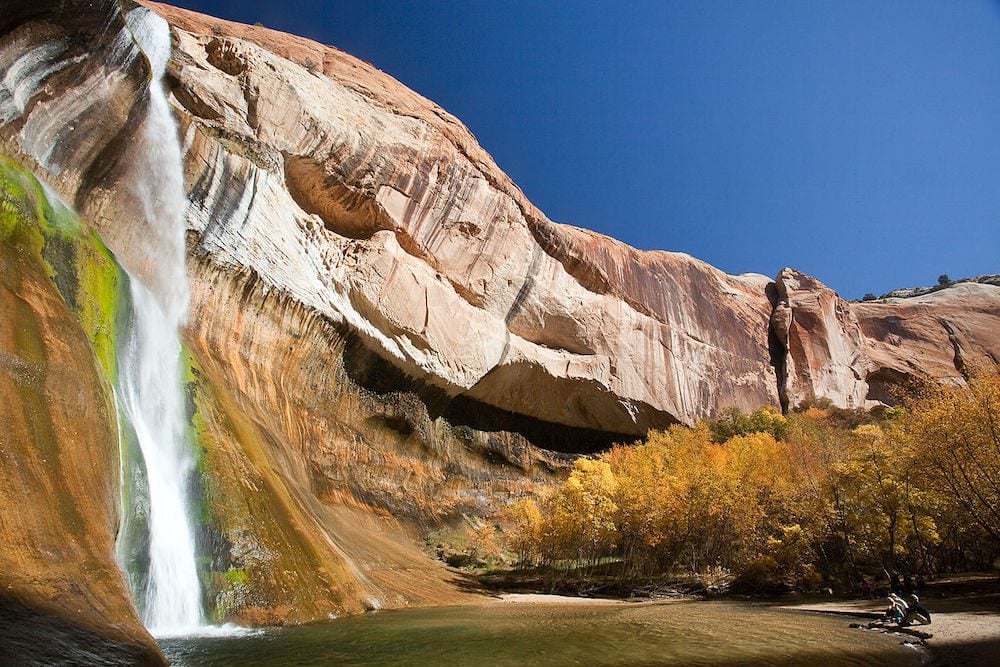
At the town of Torrey, turn to Scenic Byway 24 and head to Fruita. The scenery on this stretch of desert road is magnificent, with a few worthwhile stops at Chimney Rock, Panorama Point and its extension to Goosenecks Overlook, and the Fluted Wall.
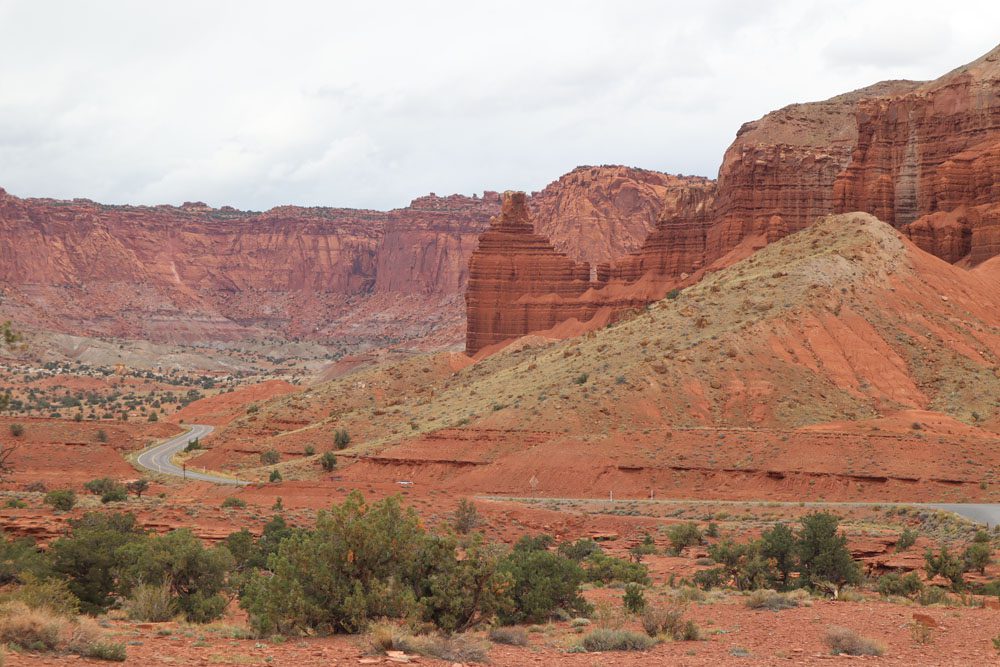
In Fruita, stop at the visitor center to “sanity check” your Capitol Reef itinerary, check out the historic schoolhouse and Gifford Homestead, and drive the length of the marvelous eight-mile scenic drive. If you want a slightly longer road trip, continue to Capitol Gorge and hike to Pioneer Register.
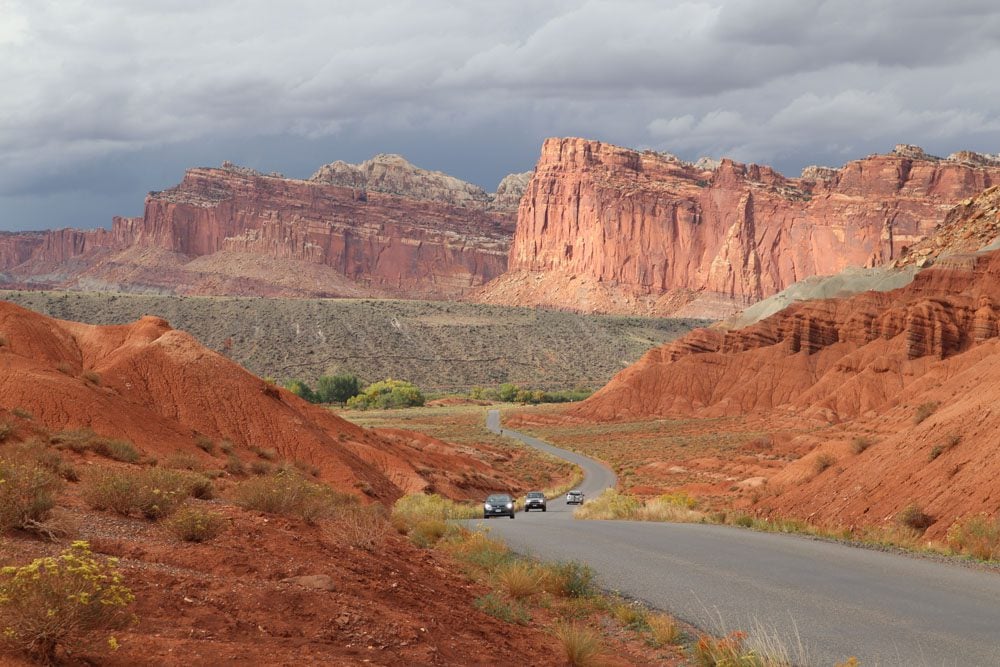
Back on Highway 24, see the beautiful Native American petroglyphs and head further down the road to pick the trail to Hickman Bridge to wrap up the day. Alternatively, hike the easy Grand Wash Trail and combine it with the Cassidy Arch Trail for a slightly longer adventure.
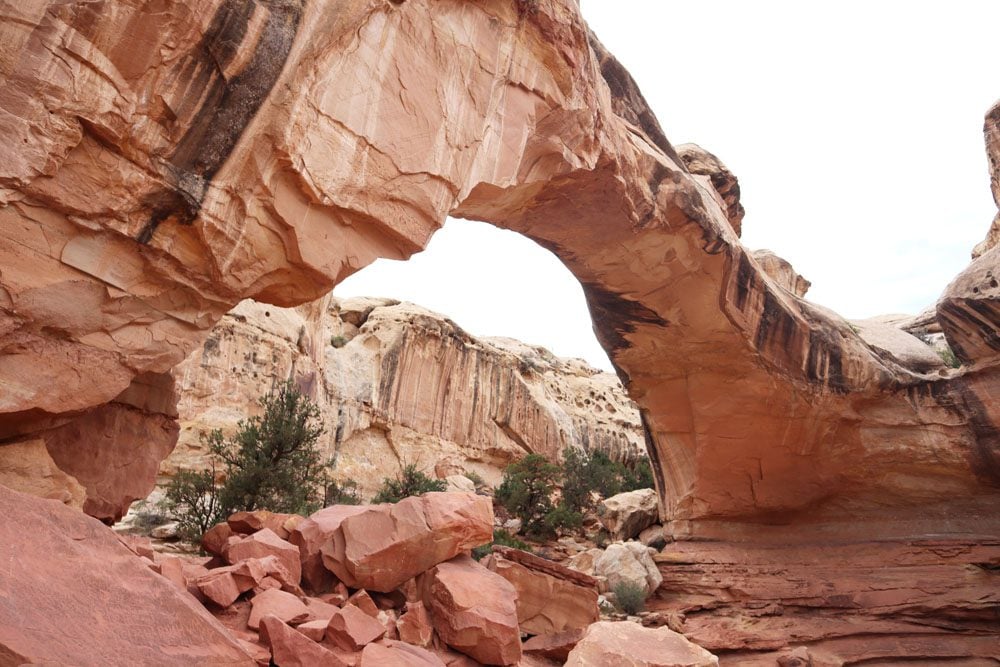
Get a very early start the following morning because there’s a lot of driving and sightseeing on the menu. The first option is to drive the Cathedral Valley Loop, a 58-mile scenic drive on a dirt road just north of Fruita. You’ll need a high clearance AWD vehicle or a 4WD unless otherwise advised by park rangers. If there isn’t enough time to complete the loop, drive to the Temple of the Sun and the Temple of the Moon.
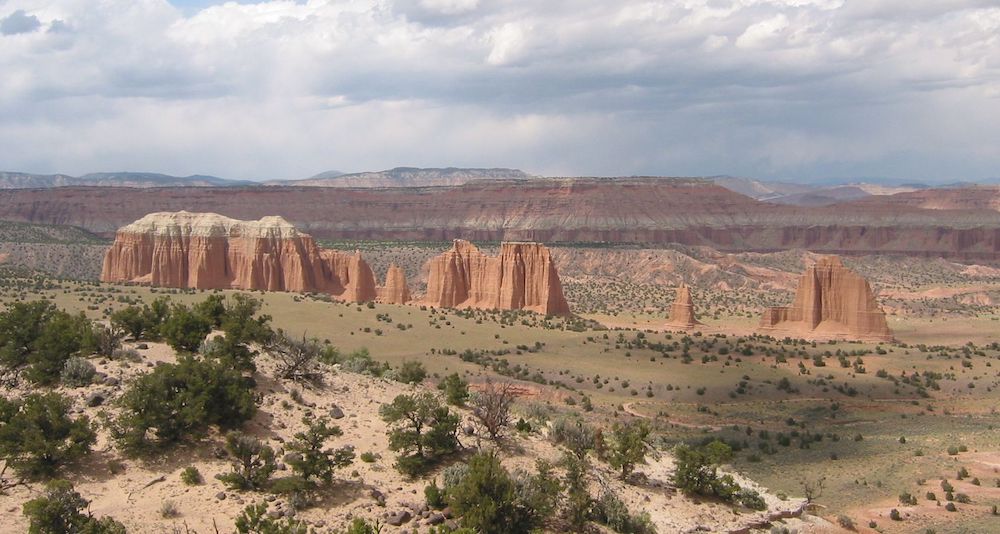
Alternatively, drive from Fruita on Norton Road and check out the legendary Burr Trail switchbacks. You can extend the drive by “looping the fold” on the section of the Burr Trail to Boulder, back in Grand Staircase-Escalante, and drive back to Fruita on the highway. Once again, check road conditions with park rangers before attempting the drive.
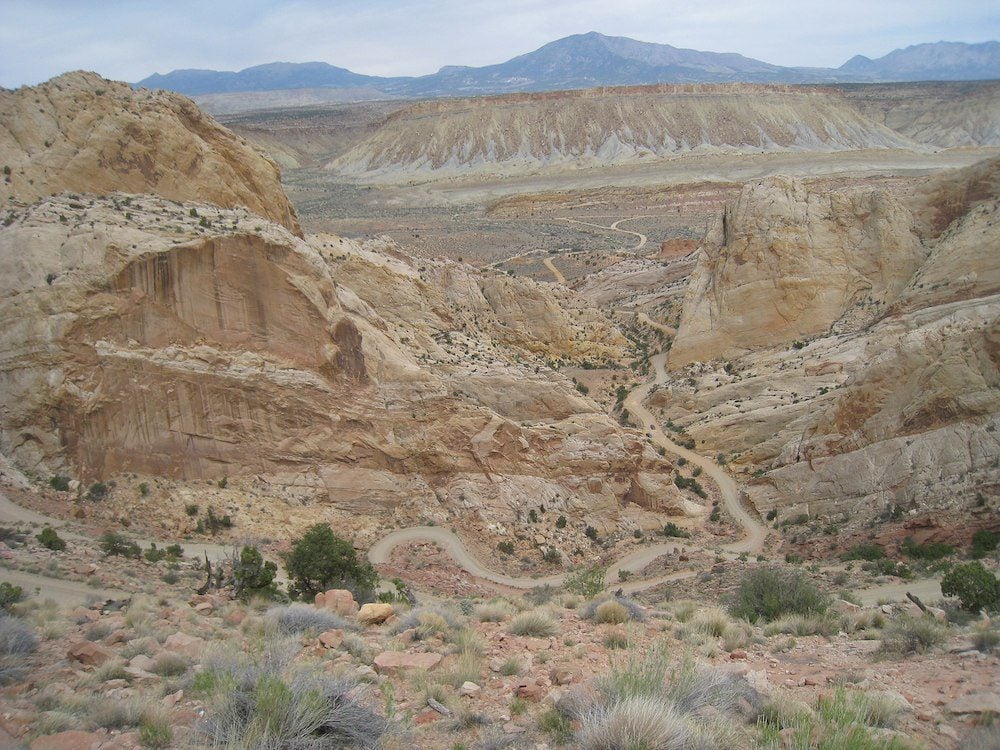
From Fruita, it’s a 2.5-hour drive to Moab. If there’s enough time left and you have the right type of car, consider checking out the seemingly out-of-place Factory Butte. Beyond the town of Hanksville, Scenic Byway 24 is as straight as an arrow for the most part until meeting Interstate 70.
Take a closer look at some of the stops mentioned above in this Bryce Canyon to Moab travel guide.
Arches National Park (2 Days)
Our next stop on this Utah road trip is devoted to Arches National Park. Home to over 2,000 natural rock arches, Arches National Park also boasts unique desert landscapes that sometimes appear to have been teleported to Southern Utah from a distant planet. Arches NP is one of Utah’s smallest, but it’s also one of its busiest national parks, so careful planning is essential, including perhaps reserving your entry time into the park in advance.
Where to Stay?
Moab is the optimal base for a visit to Arches and Canyonlands National Parks. The small city has a lot of charm and useful visitor services, such as hotels and restaurants. The campground at Devils Garden is the only accommodation option inside Arches NP, but it is challenging to reserve a spot in peak months. If you’re out of luck at Devils Garden, look for other camping options in BLM campgrounds along State Route 128.
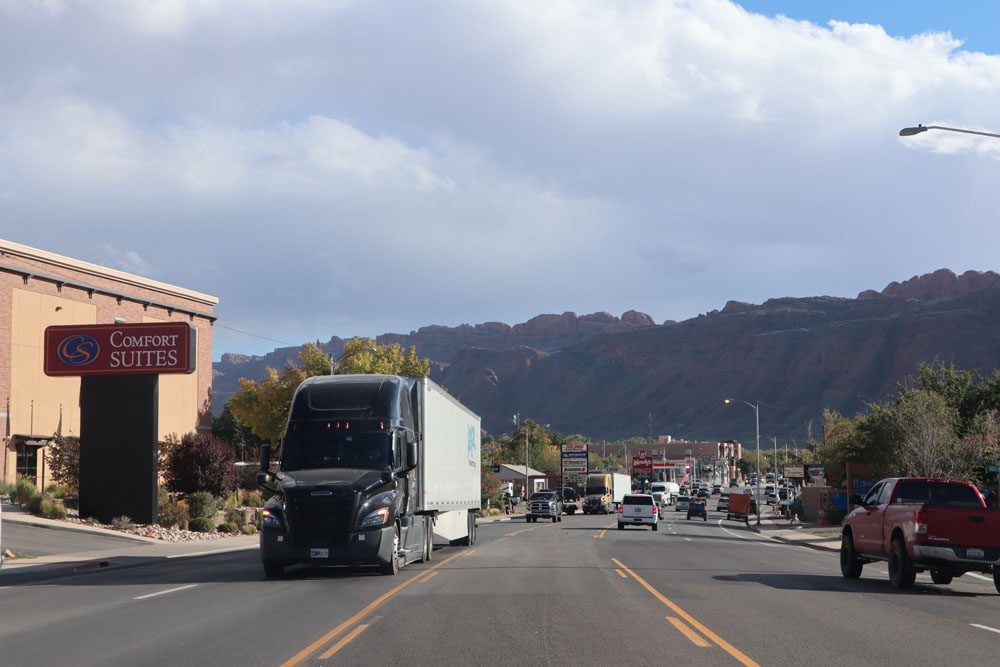
What to Do?
Spend the first day in Arches NP, focusing on Devils Garden and Delicate Arch. Get an early start and perhaps watch the morning colors from the La Sal Mountain Viewpoint. Then, continue along the 18-mile scenic drive to its northern tip at Devils Garden and hike the length of the Devil’s Garden Trail. This trail loops around an area of the national park with the highest concentration of natural arches. Highlights include Landscape Arch, the largest in the park, Double O Arch, and the wild Primite Trail on the return leg.
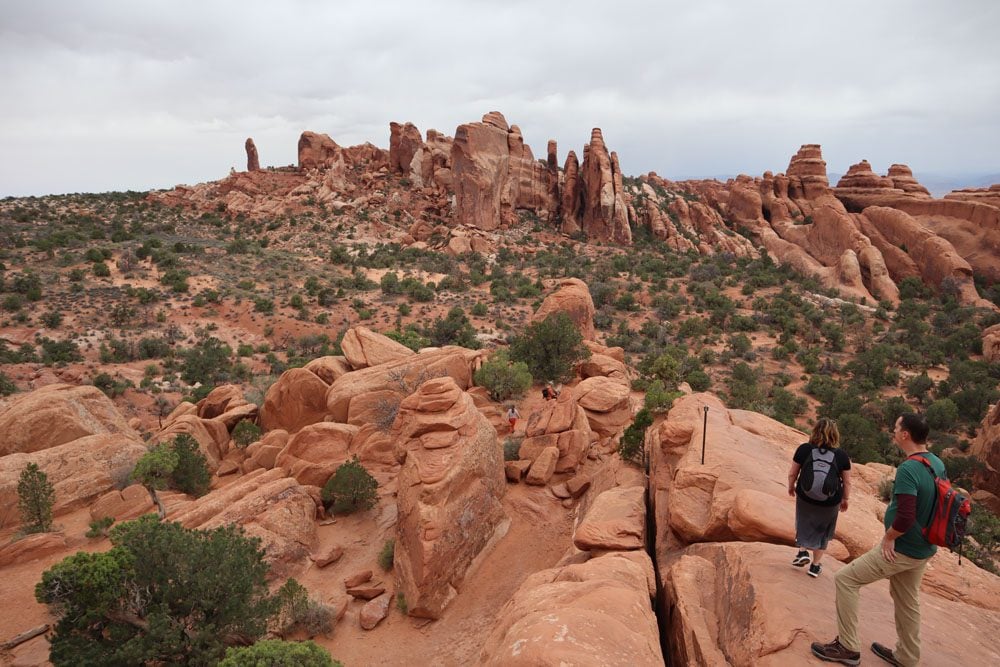
In the afternoon, patiently look for a parking spot at the Delicate Arch trailhead. Hiking to Delicate Arch is the top highlight in Arches NP, though some sections of the trail are challenging. Back in the car, check out the bizarre-looking Balanced Rock, and then spend the rest of the afternoon around the Courthouse Towers and Park Avenue before heading back to Moab.
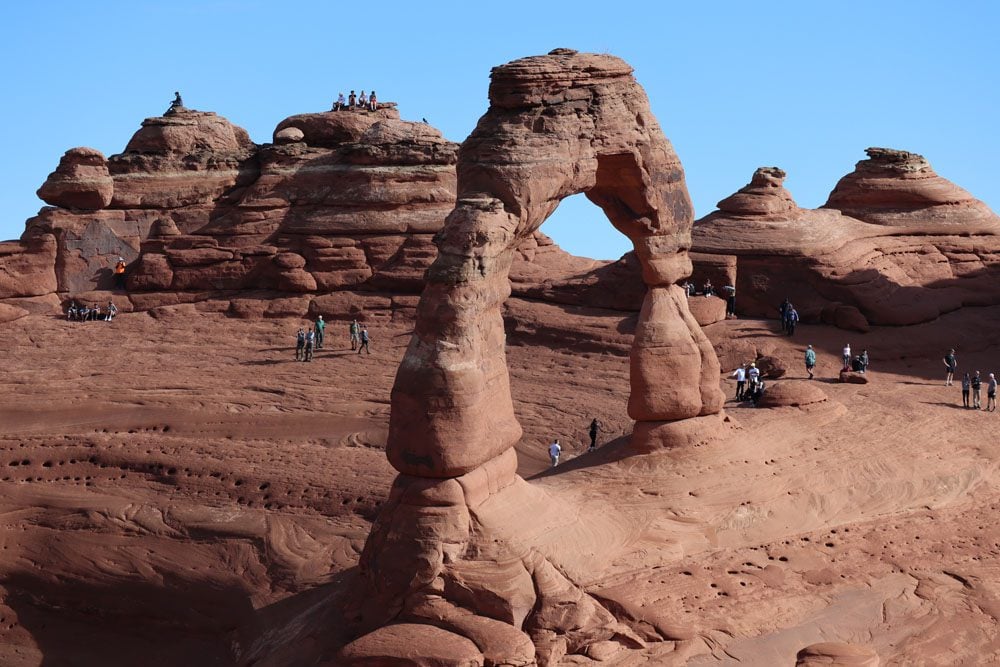
On day two in Arches NP, drive in the morning to the remotest section of the national park on the eight-mile dirt road to Klondike Bluffs and complete the Tower Arch Trail. Then, devote the afternoon to the eye-catching Windows Section.
Begin with a stop at the Garden of Eden Viewpoint to see the Parade of Elephants, an impressive series of mighty sandstone pinnacles that resemble something you’ve seen in a NASA mission to Mars. Next, continue to the end of the paved road to hike the Windows Loop Trail, later crossing the road for the short trail to Double Arch.
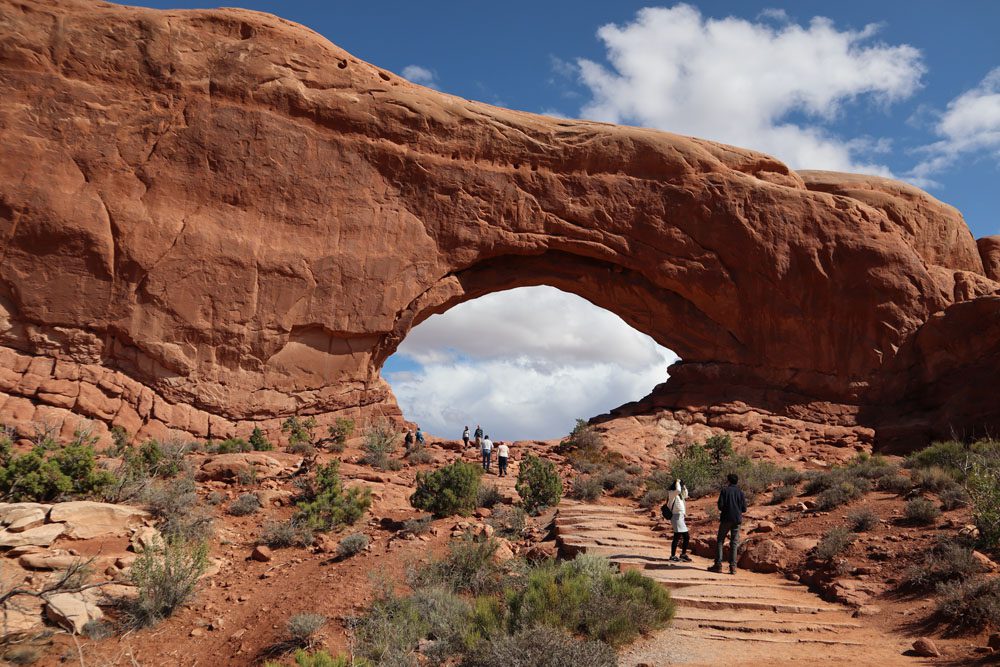
Here’s an in-depth look at how to spend two days in Arches NP and a quick rundown of the top things to do.
Canyonlands National Park (3 Days)
The last leg of this 10 days in Utah road trip itinerary takes us to Canyonlands National Park. Canyonlands is easily Utah’s largest national park, yet it’s the least visited due to the remoteness of some of its sections. Canyonlands comprises four separate districts that aren’t connected thanks to the natural borders dedicated by the Colorado River and the Green River, which run through the heart of the national park.
Where to Stay?
Moab is an ideal base for exploring Canyonlands National Park. However, it’s only close to the Island in the Sky district. If you want to shorten the distance to Horseshoe Canyon, consider moving to Green River for one night, and if you’re heading to the Needles, staying in Monticello or La Sal will shave off some driving time. See if there’s space available at the Island in the Sky or the Needles campgrounds for camping options. If there’s none, look for a free spot in BLM campgrounds outside Moab along State Route 128.
Here are all the Moab, Monticello, La Sal, and Green River accommodations that can be booked online via Booking.com.
What to Do?
Spending three days in Canyonlands provides enough time to travel to three of its districts, though you could easily spend more than one day in Island in the Sky or the Needles. If you have a 4WD, you could potentially spend the entire visit to Canyonlands “getting lost” in the Maze district and camping in the backcountry.
Island in the Sky
Spend the first day in Canyonlands NP in Island in the Sky, the park’s most visited and accessible section. Island in the Sky derives its name from its commanding position on the edge of a 6,000-foot sandstone mesa, overlooking 100 miles of stunning Canyonlands scenery. Y-shaped Island in the Sky is bordered by the Colorado and Green Rivers, whose confluence is at its southern tip.
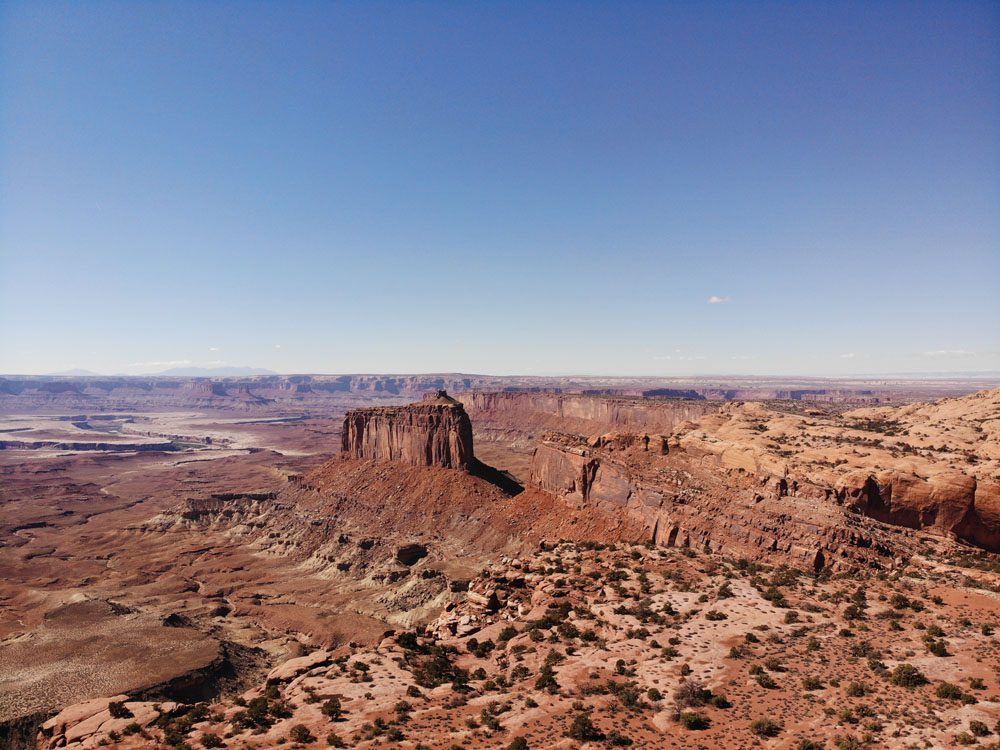
Thanks to a 34-mile scenic drive, Island in the Sky is easy to explore. The drive offers access to many gorgeous scenic lookouts and trailheads. Spend the morning driving the length of the scenic drive. Start at Mesa Arch and enjoy morning colors shining through this natural window. Then, head to Grand View Overlook and hike the length of the Grand View Point Trail to better understand why they call it Island in the Sky.
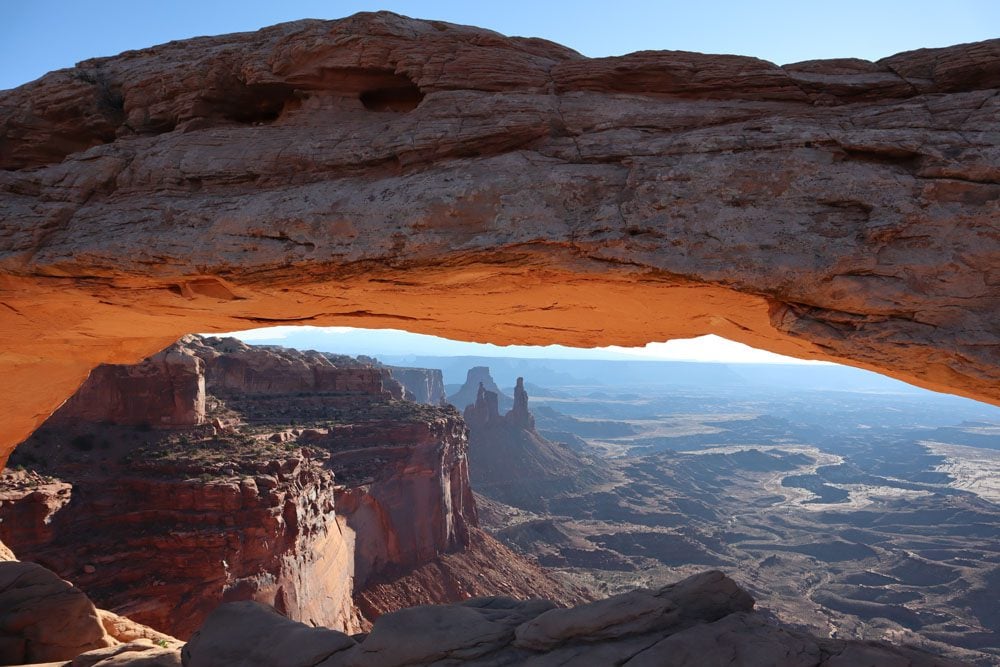
After the hike, continue to additional scenic spots, including Buck Canyon and White Rim Overlooks. At the Green River Overlook, witness how the serpent-like river shaped Canyonlands and then continue to Upheaval Dome to see the meteorite impact crater.
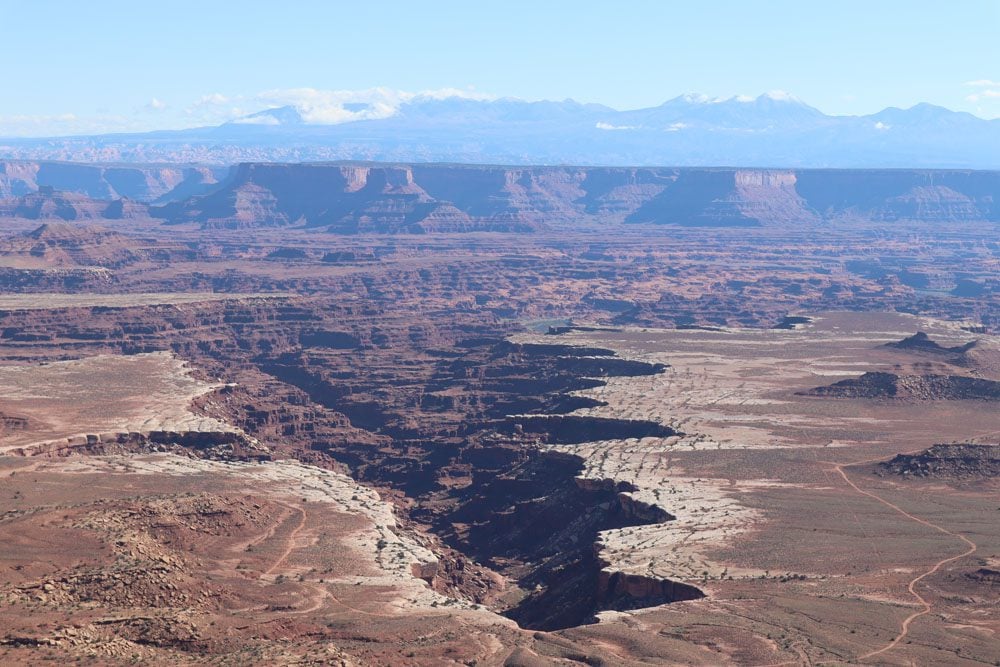
Spend the afternoon hiking one of Island in the Sky’s medium or long trails. Challenging trails descend over 1,000 feet from “the island” and lead to the famous 4WD-only White Rim Road. Remember, though, that what goes down must come up. Shorter trails like the Neck Spring Trail and Murphy Point Trail are easier options. Before returning to Moab, leave enough time for a glorious sunset next door at Dead Horse Point.
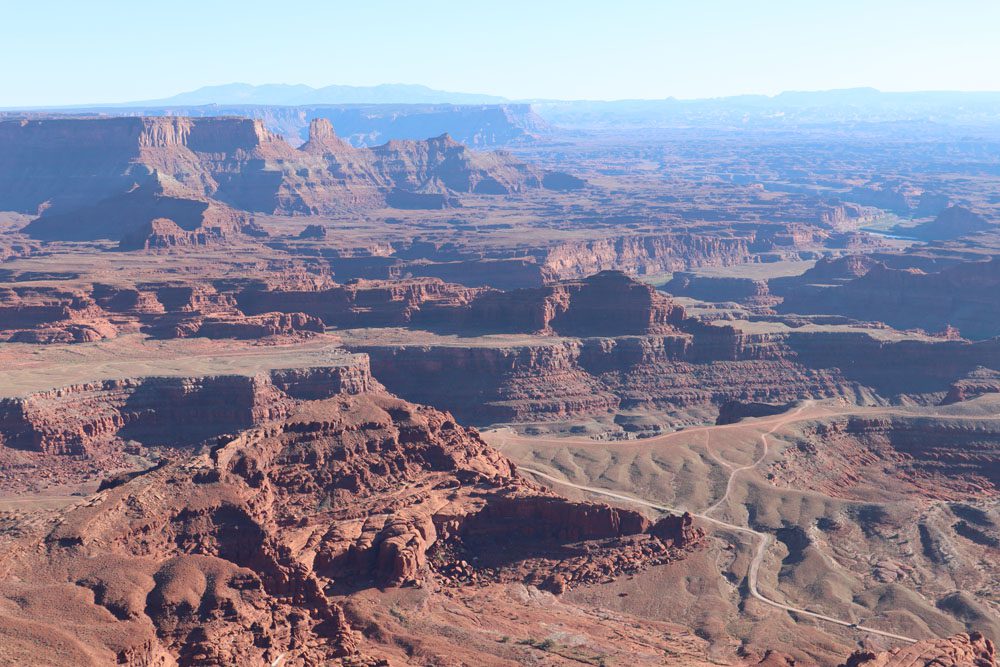
Horseshoe Canyon
On day two in Canyonlands, see some of North America’s most significant and magnificent rock art at Horseshoe Canyon. Getting here is quite a challenge, taking about 2.5 hours from Moab or 1.5 hours from Green River. Most of the drive is on dirt roads suitable for regular cars if it hasn’t recently rained.
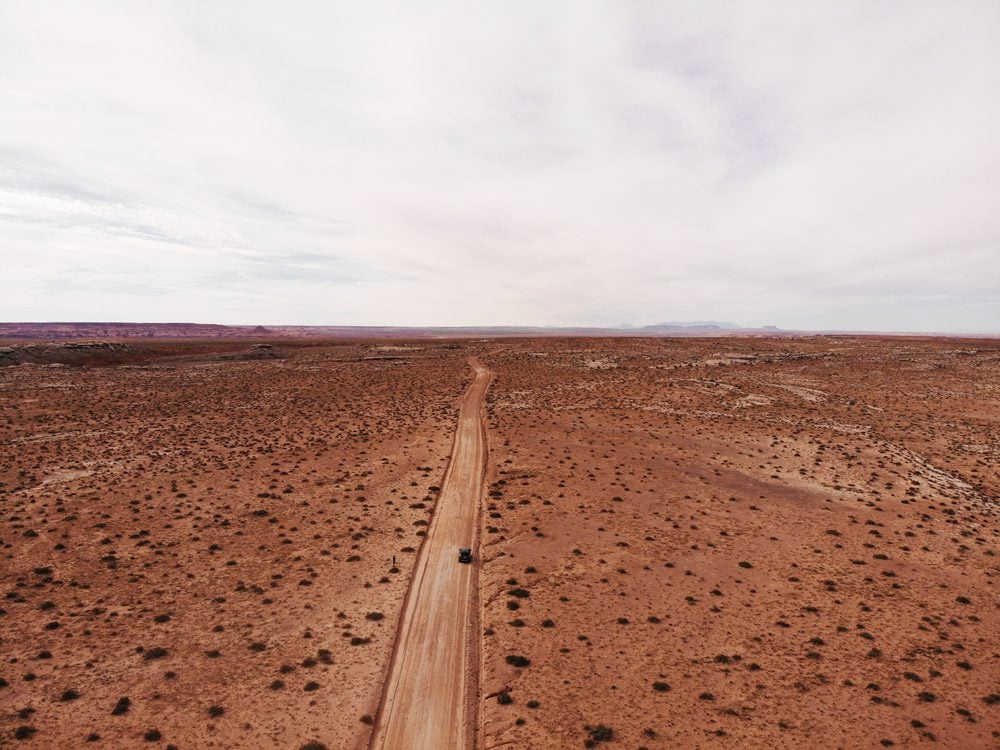
The goal is to hike the moderately difficult Horseshoe Canyon Trail, which leads to several galleries whose mysterious rock art is estimated at 3000-4000 years old. Nobody really knows why the ancient hunter-gatherer tribes painted these figures or what exactly they collectively mean, but the feeling of hiking in this secluded canyon and seeing these ancient works is hard to describe.
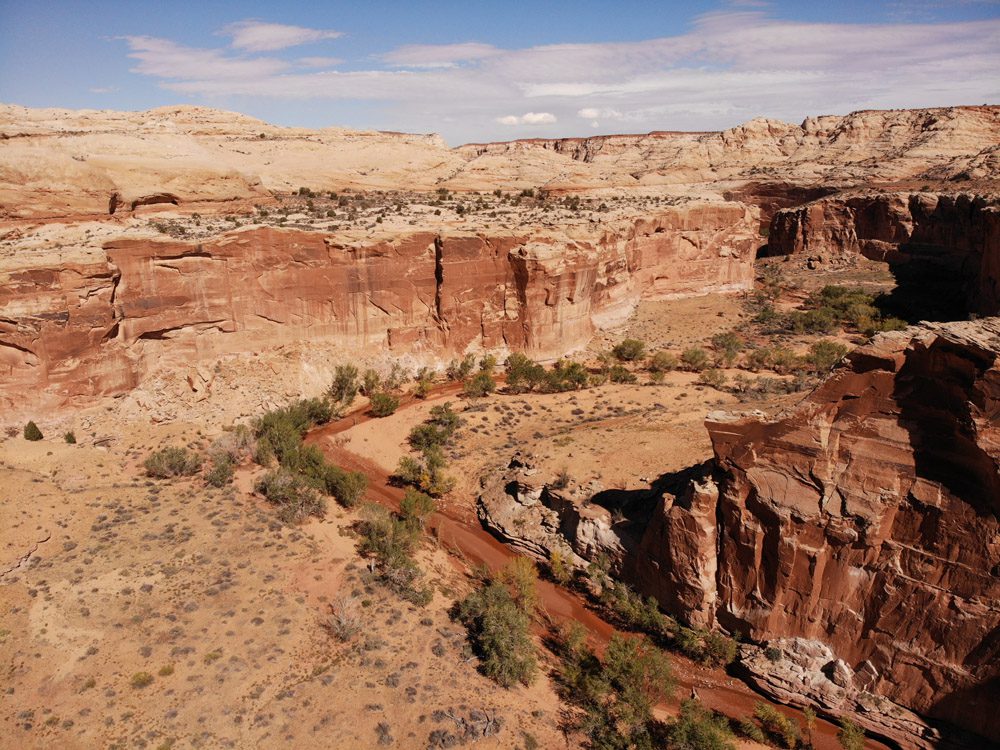
The trail’s highlight is the Great Gallery, with its life-sized human figures, intricate patterns, and impressive use of color.
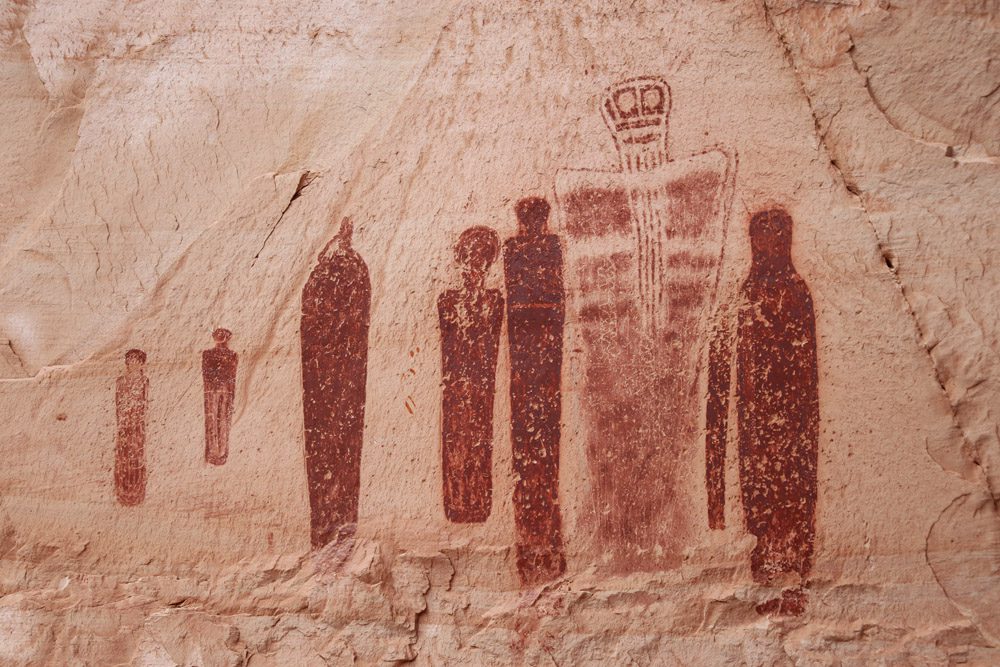
The Needles
Explore the Needles district on day three in Canyonlands. The Needles is the second-most visited district in Canyonlands, after Island in the Sky. It’s not far from Moab but not close either, so you’ll need to get an early start, especially if you want to hike one of its popular trails.
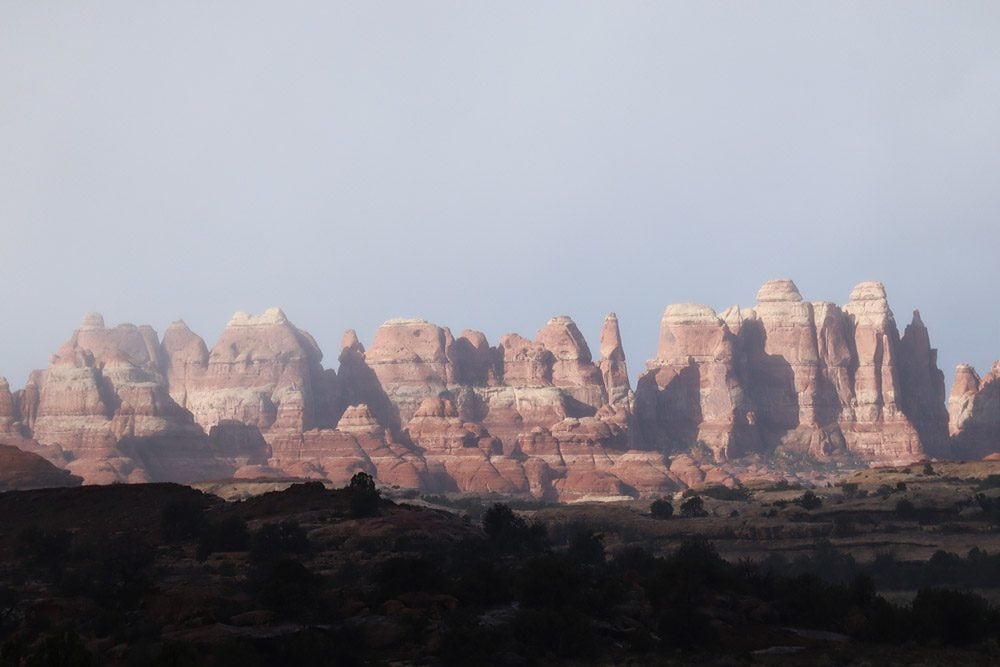
The Needles’ scenic drive is only 6.5 miles long, but it does offer several stops and access to short hikes, the best of which is at Big Spring Canyon Overlook. If you’re not planning on tackling a “serious hike” spend the day casually driving the length of the scenic drive and hiking short trails, such as the Cave Spring Trail and the Slickrock Foot Trail. However, the best way to see the famous needles is on long hikes that take between 5-8 hours, the finest of which is the Chesler Park Loop Trail.
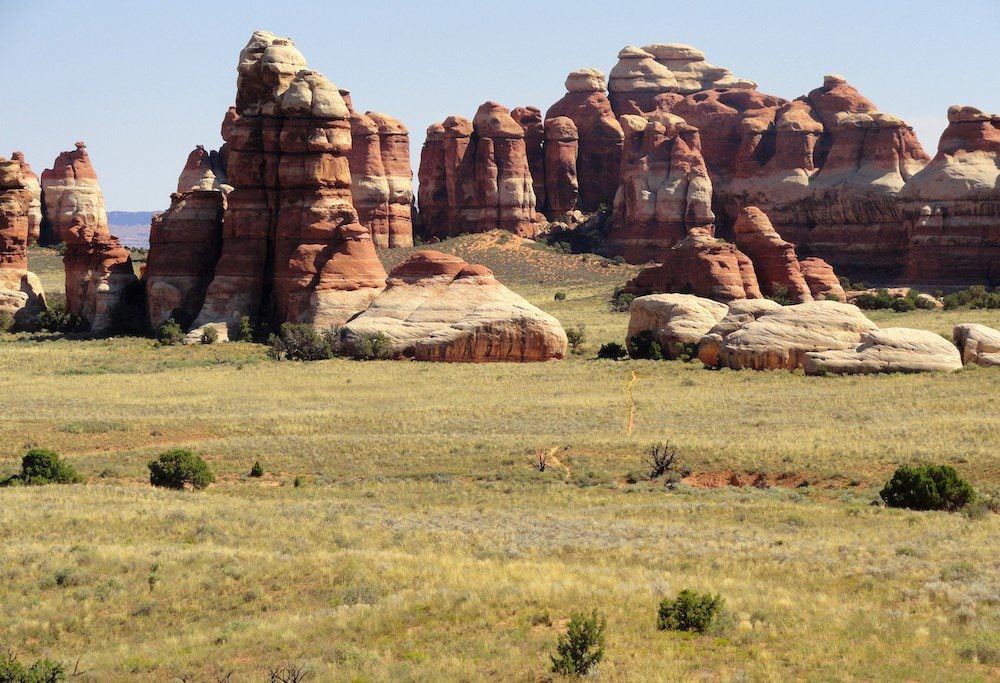
Here’s a detailed two-day Canyonlands itinerary with an in-depth look at Island in the Sky, Horseshoe Canyon, and the Needles. For a quick read, here’s a list of the top 10 things to do in Canyonlands.
What’s Next?
On this 10 days in Utah itinerary, we covered the “Mighty Five” on a road trip spanning over 400 miles. Since this area is so vast and beautiful, a few more days allow us to slow things down and more extensively explore the backcountry. That said, this itinerary does cover the parks’ major highlights and perhaps ignites a spark for a return visit. Before planning your road trip, check out additional Southern Utah and Southwest USA travel guides.

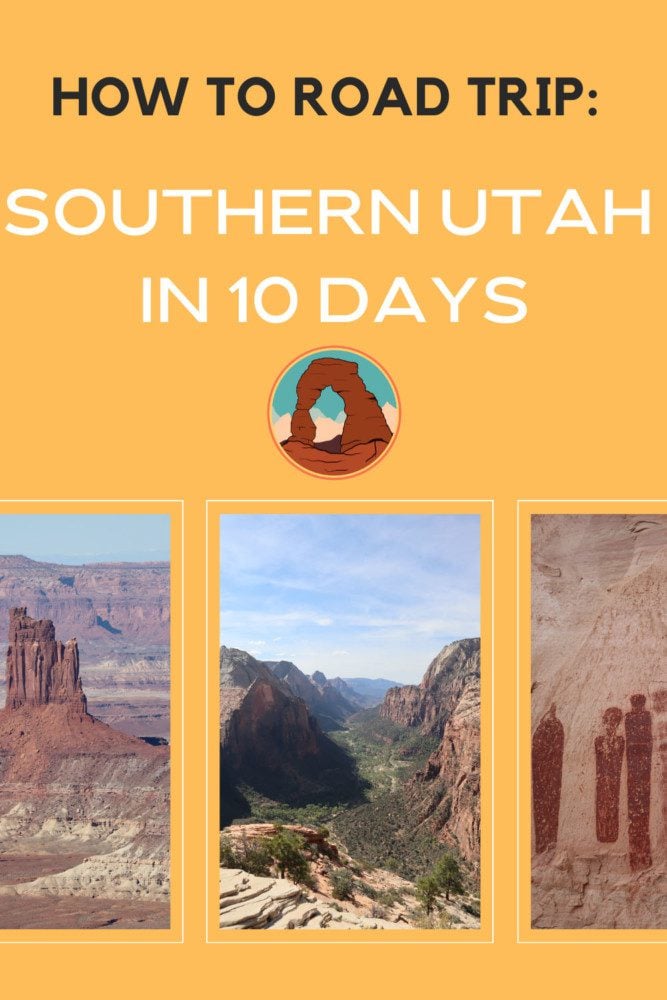
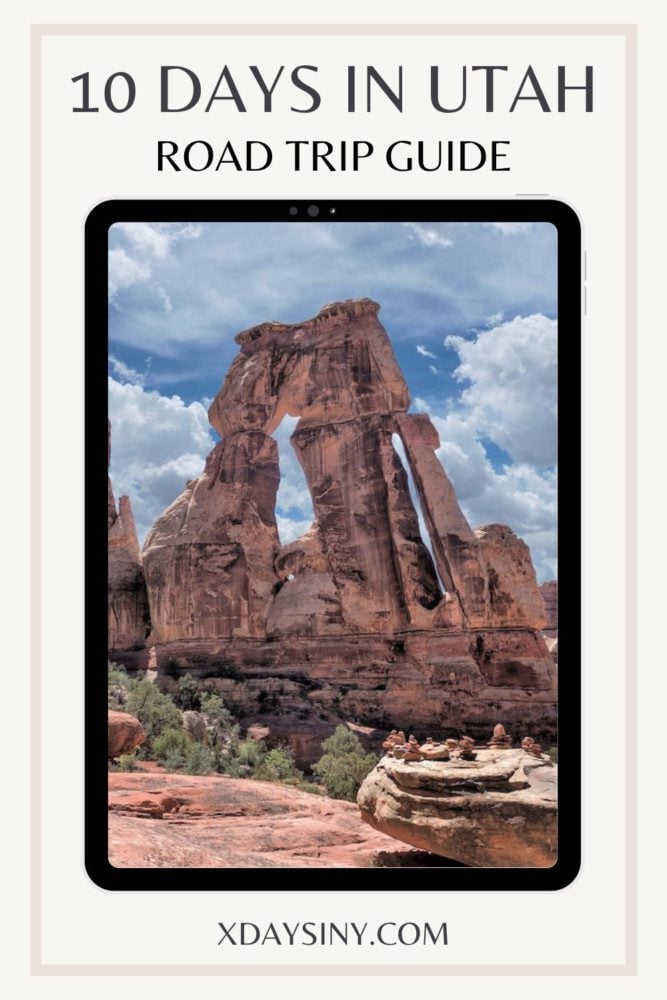
Pin These Images To Your Favorite Boards!




